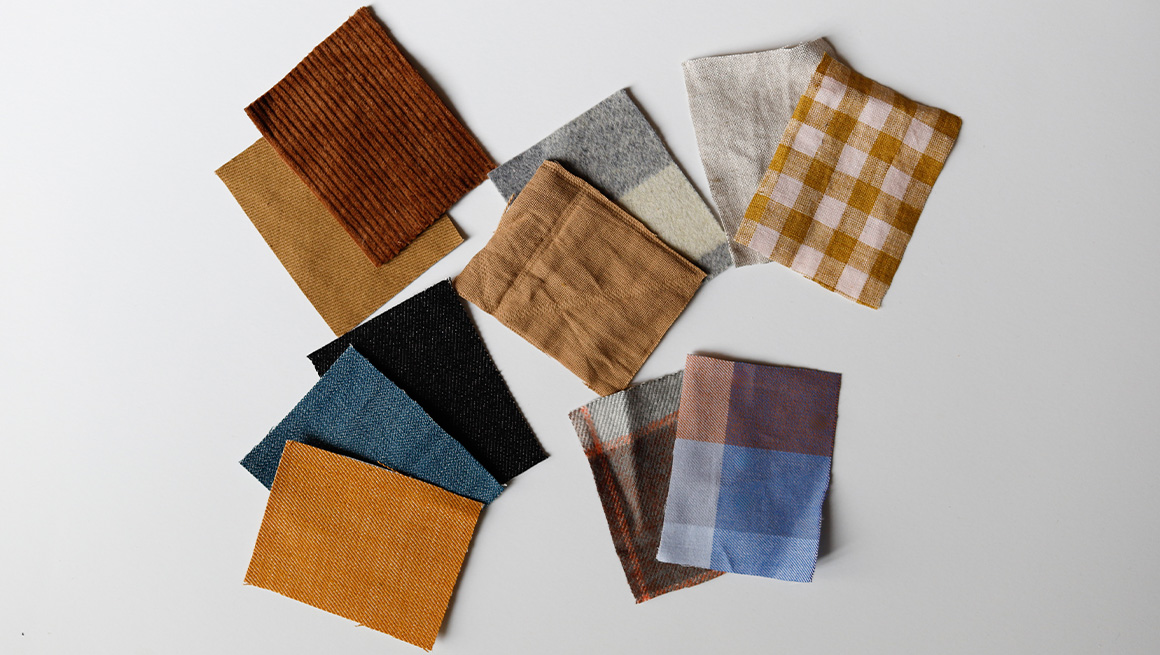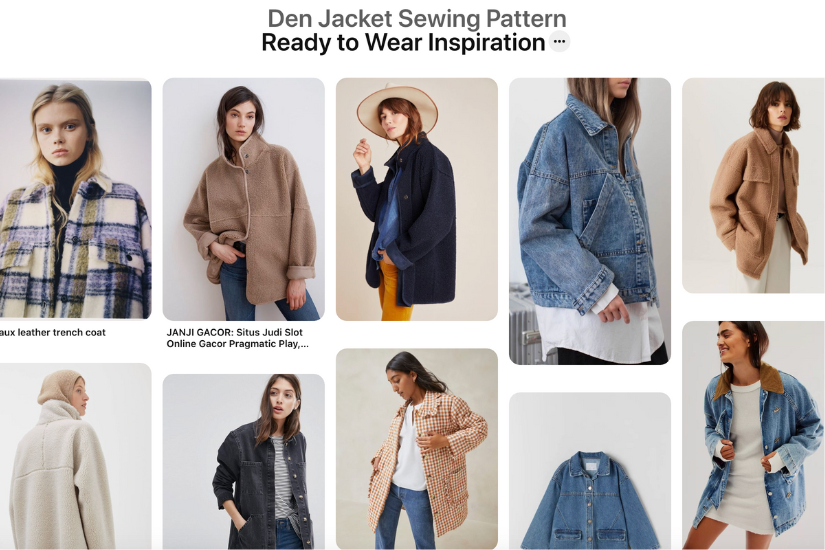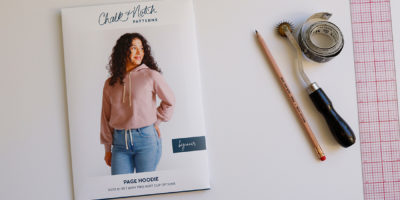
Fabric selection is one of my favorite parts of the sewing process, and I thoroughly enjoyed seeing how each fabric changed the look and feel of the Den Jacket pattern. There are so many good jackets out there; we have rounded up ready-to-wear that we hope will inspire you. Check out our Den Pinterest board here. Now, let’s talk about recommended fabrics and reasons for choosing each.
Make sure you have a copy of the Den Jacket pattern.
Before we get into fabric recommendations, there are a couple of notions you’ll need to gather.
NOTIONS
- 1/4 yd (1/4m) Tricot Fusible Interfacing. We recommend this tricot fusible interfacing from Wawak.
- Seven to Ten 1/2″ (12.7 mm) Buttons or Snaps for the Center Front. The amount you need will depend on your Jacket length and preferred spacing.
OPTIONAL NOTIONS
- Topstitching Thread: I like to use Gutermann Mara 50 – Tex 60 for my topstitching. It’s not too thick but still gives me a ready-to-wear topstitching appearance.
- Tailor’s Chalk or Washable Fabric Marker: Used for marking notches, bust darts, and pocket placements.
- Turning Tool: Helpful for turning out your collar and placket corners.
- Stay Tape: Helpful when attaching the collar and center front placket. It can keep your seam in place if pins are not enough. There are several types; this is a link to Wonder Tape.
- Pressing Ham: Helpful when pressing the curve of your armhole and the collar.
BUTTONS AND SNAPS

The Den calls for 7-10 buttons or snaps that are 1/2″ (12.7 mm). I ended up using metal snaps for all the photo samples. I attached them using a hand press. You can find the press I own here, paired with this 15mm die set and 15mm bronze snaps. It’s an investment, but I knew it would make my job much easier. You can also buy smaller snap sets that you attach with tools, a hammer, or a smaller hand fastener.
A design feature of the Den is a wide placket. The center front is 5/8″ (1.5 cm) away from the finished edge, not centered in the middle. When deciding button/snap placement, start by placing a button/snap at your full bust and then spaced evenly anywhere between 3.375 (6 cm) and 3.5″ (9 cm). For reference, I set the photos samples 3″ (7.5 cm) apart.

FABRIC SOURCES
One of my favorite qualities of Den is how easily you can switch up the look with different fabric types. The Den is designed for medium to heavy weight woven fabrics but can also be sewn in a lightweight woven for an oversized shirt. Choosing a thicker fabric or lining will reduce the ease, so you may want to size up. I recommend choosing a mid weight fabric that holds a press when making your first Den Jacket. Thicker fabrics look fantastic but can be a beast to sew.
Suggested fabrics are canvas, corduroy, denim, flannel, linen and twill.
DENIM AND TWILL
First up, for a classic utilitarian chore coat look, denim and twill fabrics. They look great and are a breeze to sew; just make sure to use the correct needle size. Look for 9-12 oz non-stretch denim or twill fabrics similar to the ones shown below. A bonus of denim fabrics is that they create the perfect base for contrast topstitching to show off the jacket’s interesting seam lines.
LIGHTER WEIGHT OPTIONS
If you’re looking to create a lighter shirt jacket or “shacket” look, fabrics like linen, lightweight woven cotton, and flannel are all fantastic options. Sewing in a lighter weight will give you a completely different look and is perfect for spring and summer layers.
SPECIALTY FABRICS
While creating photoshoot samples, I had a ball experimenting with different textures and specialty fabrics, including wool, fleece, corduroy, and jacquard. A few of our testers also used quilted fabrics. Using these fabrics changes up and can make a jacket extra special, but some may require a little extra patience and care while sewing.
OPTIONAL LINING FABRICS
The Den pattern includes an optional lining that can be sewn in flannel, fleece, lawn, linens, or cotton. I love the cotton block prints that are available right now. For ease of wear, if your bodice lining is flannel or fleece, a slippery lining like lawn, rayon challis, or rayon bemberg is recommended for the sleeve linings. Flannel works in the sleeves when choosing a fabric that has a smooth hand-feel.
Find even more fabric suggestions on our Pinterest Board here.
Thanks for reading more about the recommended fabrics and notions for the Den. I can’t wait to see which fabrics you choose for your jackets! – Happy Sewing!







